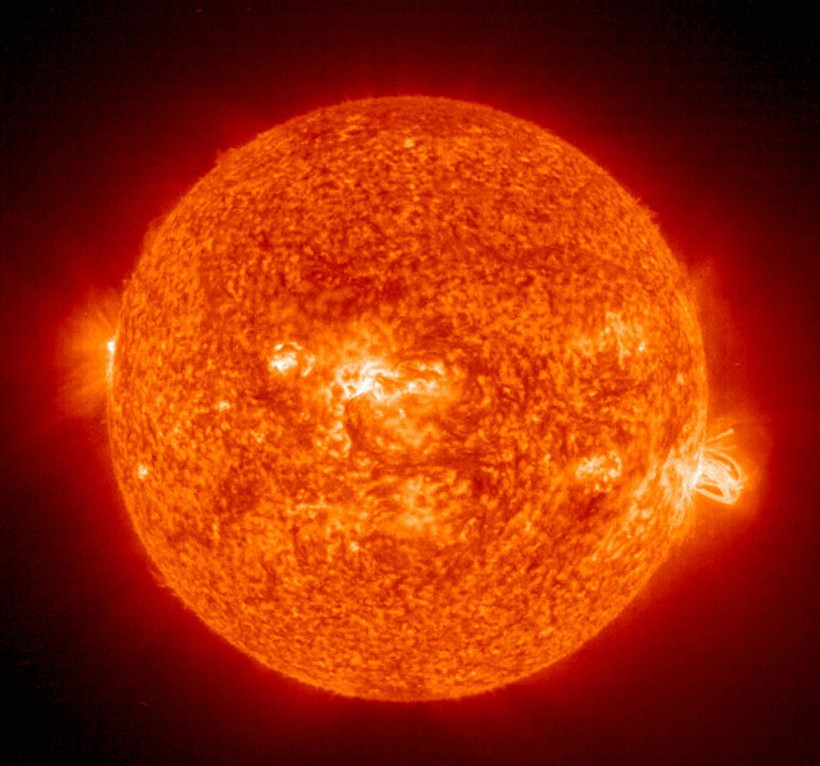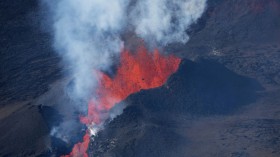A geomagnetic storm from a solar storm is hitting Earth as of Sunday, March 27.
The National Oceanic and Atmospheric Administration (NOAA) - Space Weather Prediction Center (SWPC) issued a warning that the space weather phenomenon can cause widespread disruption in communication and signal.
G1 Geomagnetic Storm

The NOAA - SWPC said that the storm arrived as a G1-class geomagnetic storm with a K-index of 5. This means that weak power grid fluctuations can occur on the planet's power systems.
In addition, spacecraft operations, including satellites, may be disrupted.
Migratory animals can also be affected.
The US space weather agency added the impact area is expected to be poleward of 60 degrees in Geomagnetic Latitude.
As a result, this can light up the sky with an aurora or northern lights, which can be seen in the upper United States, including the states of Maine and Michigan.
The G1 level is the lowest out of the five categories for magnetic storms.
Also Read: Solar Storm Incoming: Bursts of Solar Winds Bound to Pass Earth
Magnetic Storm Hazards
Disturbances in the Earth's magnetic field during a magnetic storm can affect our electric and technological infrastructure based on radio waves from satellite communication.
These radio waves serve as signals for signal-dependent equipment to send and receive information.
The United States Geological Survey (USGS) provided specific technological hazards caused by magnetic storms on the planet:
- Global-positioning system (GPS) may become inaccurate since the storms can heat up and distort the ionosphere which long-range radio communication depends on.
- Satellite orbital movement can be difficult due to the expansion of the ionosphere.
- Astronauts and high-altitude pilots are at high risk of increased radiation levels.
- The emission of static-electric charges can damage satellite electronics.
- Voltage surges can yield to power outages or even blackouts.
Solar Storm
The latest space weather storm was caused by a coronal mass ejection (CME) from a solar storm.
The NOAA - SWPC explained CME is a result of large-scale expulsions or disturbances in the magnetic field or plasma of the Sun's corona.
When a CME occurs, it is carrying billion tons of particles and travels millions of miles per hour into space, according to the National Aeronautics and Space Administration (NASA).
These electrical particles can disrupt the magnetic field of Earth.
Solar storms can also emit solar flares, a short-lived yet abrupt eruption of high-energy radiation consisting of photons and particles from the surface of the Sun.
Solar flares are considered to be the largest explosive events in our solar system, according to NASA.
When Does a Solar Storm Occur?
The Sun is a ball of gas of hot plasma located at the center of our solar system. With the age of approximately 4.6 billion years, it is the only star and main source of energy in our said star system.
However, our Sun is also the site of one of the violent space weather phenomena in the universe.
Solar storms occur when the Sun's magnetic field in the corona, the outermost layer, becomes entangled and switches back into place.
This process can also be called "magnetic reconnection," which allowed for the release of CMEs and solar flares, as per Live Science.
In 2003, a magnetic storm caused power outages worldwide and permanently damaged power transformers and other electrical infrastructure.
Scientists fear that a magnetic storm strong in the future can cause an "internet apocalypse," leaving us for several months without connection.
Related Article: Solar Storm Warning: Geomagnetic Storm Set to Impact Earth Directly on January 15
© 2024 NatureWorldNews.com All rights reserved. Do not reproduce without permission.





